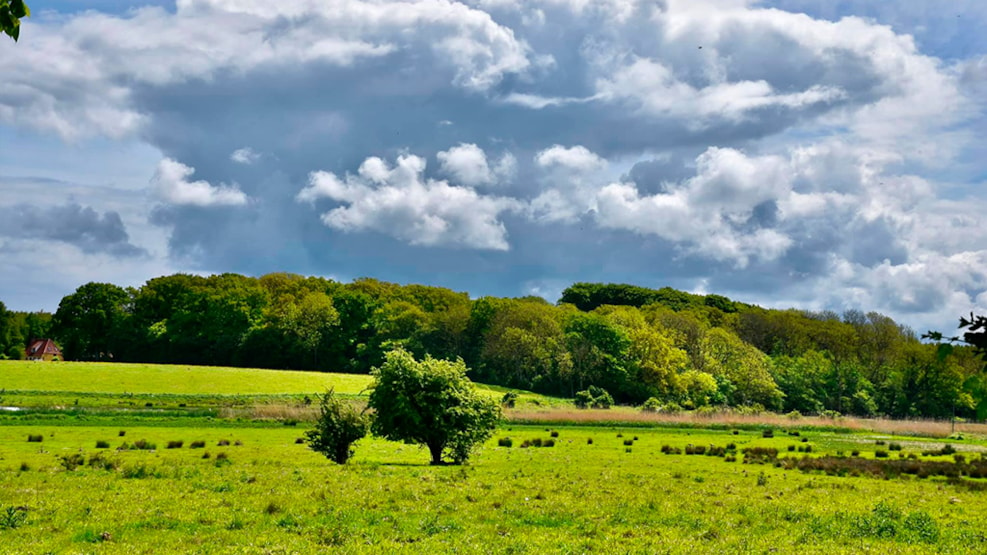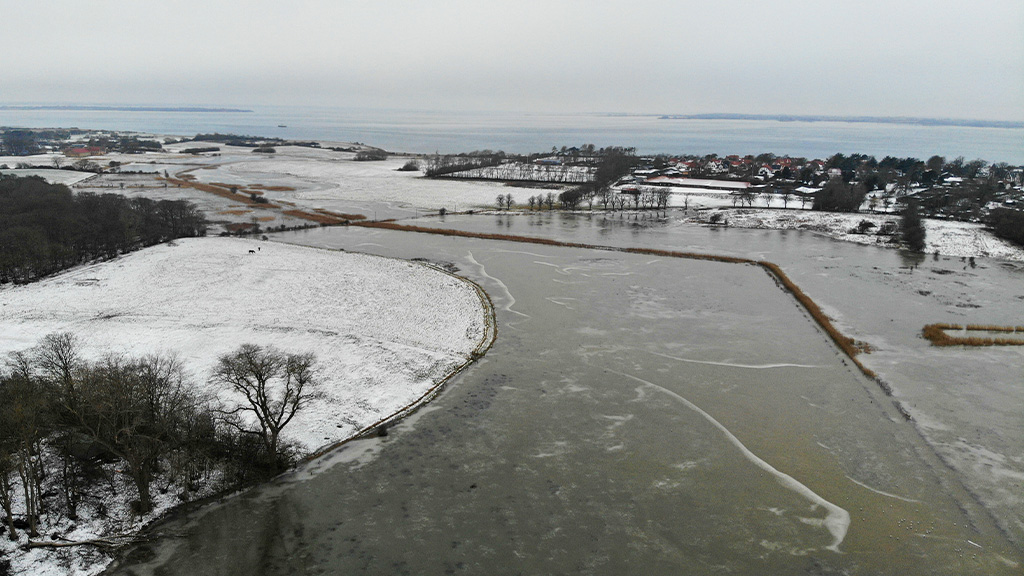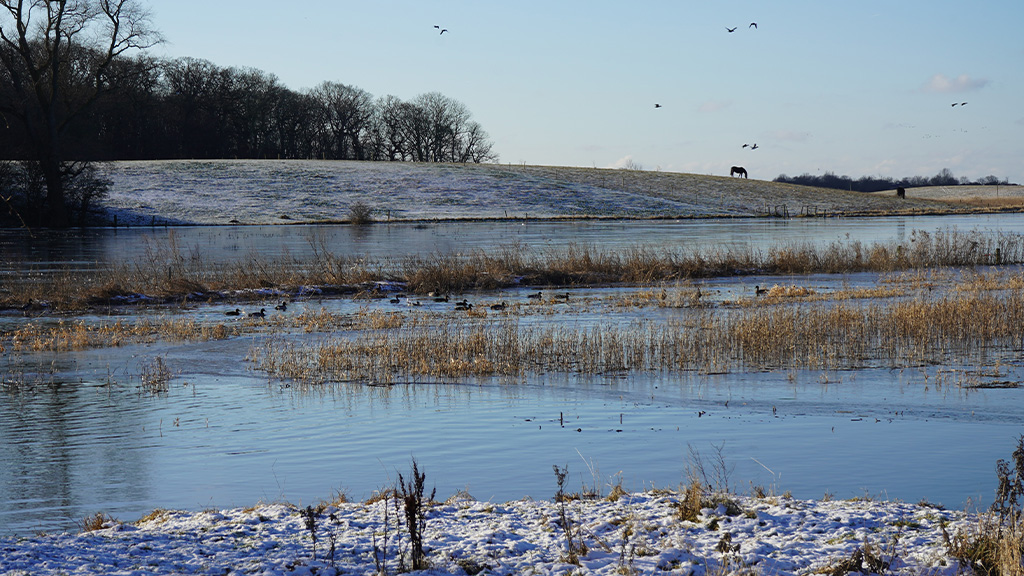
© Photo:
Rudkøbing Vejle
Back in the Middle Ages, it was possible to sail into Vejlen and anchor up.
Nature area 150 metres from Rudkøbing
Rudkøbing Vejle was originally a fjord. Well into the Middle Ages, it was possible to sail into Vejlen and anchor, which was especially important during storms and in winter. Since autumn 1995, the water level in Vejlen has been raised. This has turned Vejlen into a wet meadow in the summer and shallow lakes in the winter.
Rudkøbing Vejle is uniquely preserved and is only 150 metres from Rudkøbing's shopping street.
Urban birdlife
The water level means that there are good opportunities to see e.g. ducks and wading birds. In spring and summer, for example, redshanks, lapwings and snipe.
In winter, grey ducks, wigeons and perhaps shovelers can be seen.

Winter harbour from the Viking Age
In the winter of 2024, the water level in Rudkøbing Vejle was at the same level as before the sea defences were built.
This provided a unique opportunity to experience the original landscape where, well into medieval Langeland, it was possible to sail low-bottomed boats and ships all the way to Rudkøbing from the south.
In the shallow waters, the salt content was lower and Vejlen was well protected from wind and waves. Vejlen has been an obvious natural harbour and you can vividly imagine the small fishing vessels of the Middle Ages and the Viking Age clinker-built ships anchoring and wintering in Vejlen's protected shallow waters.
This provided a unique opportunity to experience the original landscape where, well into medieval Langeland, it was possible to sail low-bottomed boats and ships all the way to Rudkøbing from the south.
In the shallow waters, the salt content was lower and Vejlen was well protected from wind and waves. Vejlen has been an obvious natural harbour and you can vividly imagine the small fishing vessels of the Middle Ages and the Viking Age clinker-built ships anchoring and wintering in Vejlen's protected shallow waters.
